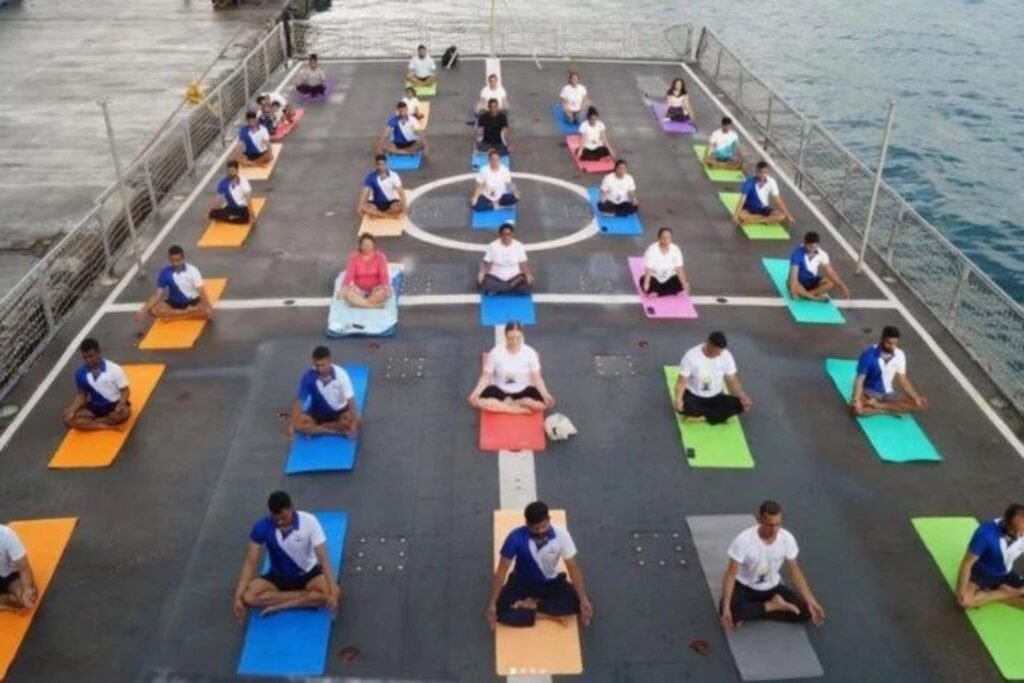Indian Navy accidentally reveals nuclear weapons withdrawal in Yoga publication on Instagram

Governments around the world are not exactly transparent about where they are storing all their nuclear weapons. You want people to know you have them, but not necessarily where they are located. You wouldn’t want, for example, to reveal that you have removed nuclear weapons from a ship in an Instagram post about yoga.
India has revealed the movement of its nuclear weapons in an Instagram post about yoga. In an article titled “”, the Federation of American Scientists (FAS) detailed how they discovered India’s nuclear weapons movement using social media.
The FAS is a non-profit organization based in the U.S. that, among other things, conducts research on nuclear weapons. Governments and military forces are secretive about their nuclear weapons, and FAS researchers use a variety of methods to uncover how many destructive weapons each country possesses and where they have stored or deployed them.
“I think this is probably the most unexpected source I have found for information related to nuclear weapons,” said Matt Korda, Associate Director of the FAS Nuclear Information Project, to Gizmodo. “Instagram and other social media are certainly excellent places to look for clues if you know what to look for, but finding information about nuclear weapons in yoga photos was a surprise.”
### A Brief Overview of Global Positions
With only 172 nuclear weapons, India is a minor player in terms of the size of its nuclear arsenal. Russia and the U.S. have over 5,000 each. Like other nuclear powers, India maintains a triad. It has air-launched, land-based, and sea-based nuclear weapons.
A submarine is an ideal place for a maritime nuclear weapon because it is stealthy. But India did not launch its first submarine with nuclear weapons until 2016. Before that, it kept its maritime nuclear weapons aboard two Sukanya-class patrol vessels, the INS Suvarna and the INS Subhadra.
The missiles on the Sukanya were of an older design. They could only travel a short distance and needed to be fueled immediately before launch. For these reasons, experts always assumed that eventually India would replace these ship-based nuclear weapons with submarine-based ones. They just weren’t sure when it would happen.
India has seven Sukanya vessels, but only the INS Suvarna and the INS Subhadra are equipped with the special equipment needed to deploy nuclear weapons. Reviewing satellite images, Korda noticed that the stabilizers required to fire the nuclear weapons appeared to be missing from the decks of the ships.
But he wasn’t entirely sure if the ships he was looking at were the INS Suvarna and the Subhadra. There were five more candidates that had never been outfitted with nuclear weapons, and it is difficult to distinguish a specific ship of the same type in satellite images.
Korda realized that these ships are not as secretive as submarines. “They have many missions beyond nuclear, including surveillance and coastal defense,” he said. “That means they generally sail into areas where people might be taking pictures of them. With that hunch, I spent a few hours searching for keywords on social media for the specific ships I was looking for, to see if anyone had captured any images. And that’s when the yoga photos appeared.”
The first yoga post was on the deck of the INS Suvarna, posted in October 2022 by PBS India. The second was on the deck of the INS Subhadra in February 2024. The stabilizers were missing in both photos, indicating that India had moved its nuclear weapons.
India engages in significant yoga practice. The practice is one of the country’s best-known exports, and as a result, the government and military take many photos of people doing yoga for social media posts. Including on the deck of a ship that once housed nuclear weapons.
### What Else Did Korda Discover?
In multiple posts over the past two years, Korda found that the two Sukanya vessels had been the setting for several yoga posts. And in those posts, their nuclear weapons were missing. “The Indian Navy certainly must get some value out of their yoga-related diplomacy initiative, as they do these practices fairly regularly,” he said. “Perhaps some military signaling, maybe some cultural diplomacy, maybe something completely different. But whenever a country deploys a highly visible nuclear capability, eventually getting rid of it will be noticed by someone. And sometimes that can tell us something valuable.”
“Usually, you can learn things about military systems by watching them do military things: navigate in exercises, conduct weapons tests, that kind of thing,” Korda said. “It is much more unusual to learn things about military systems, especially nuclear systems, in non-military environments. That’s what makes this case unique.”




